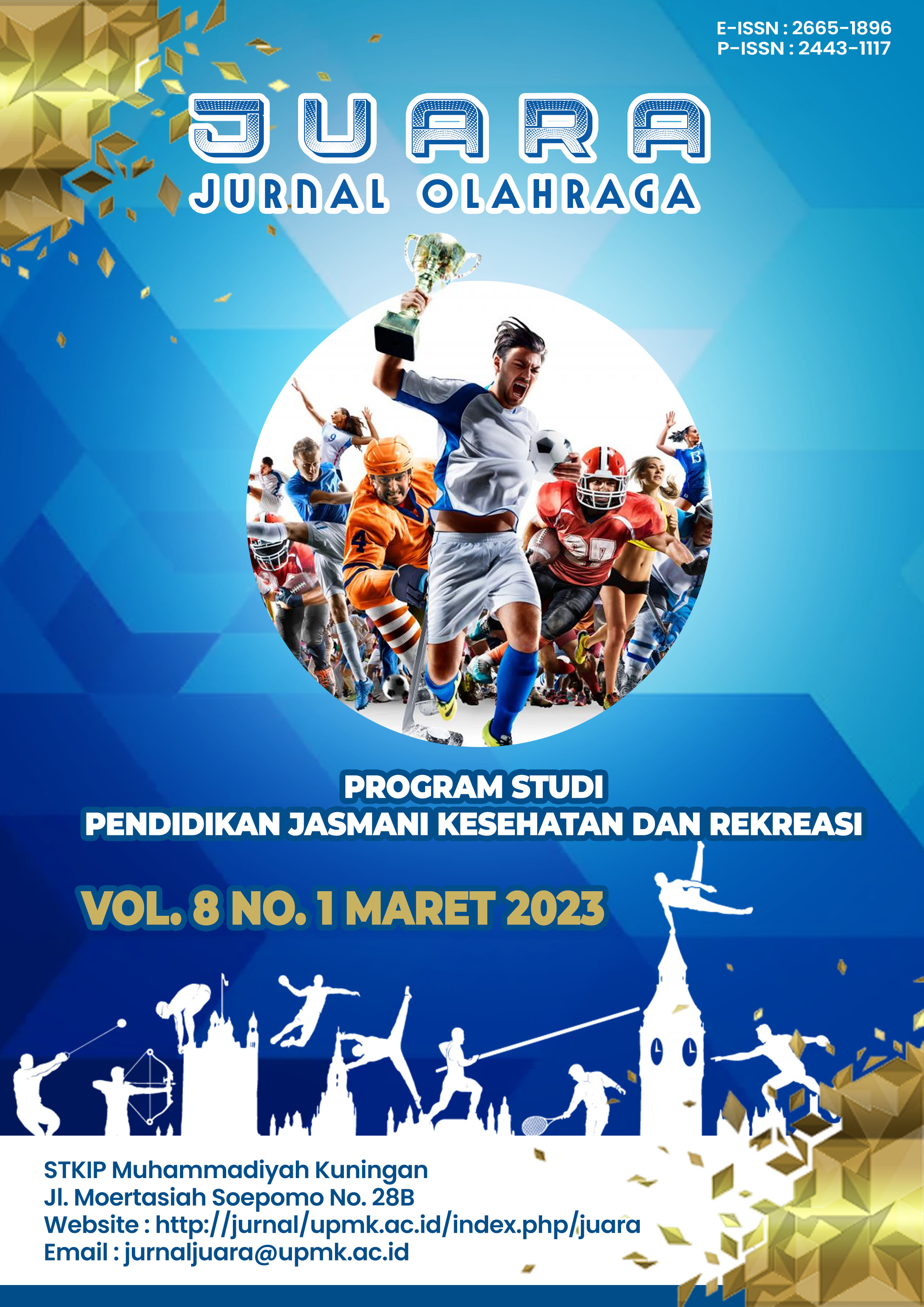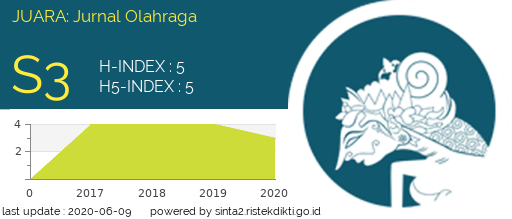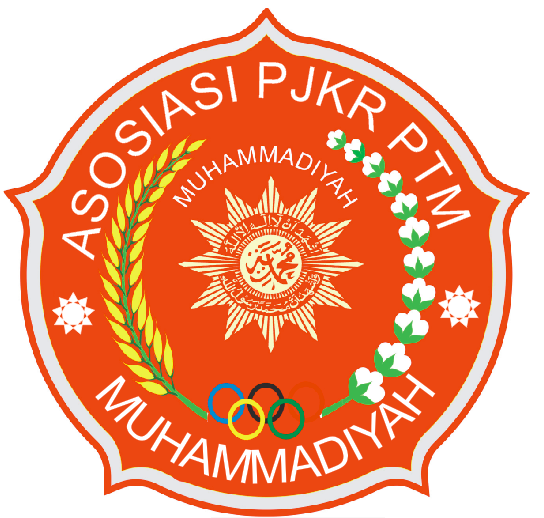The Effectiveness of Outdoor Education on Student Creativity
Abstract
This study aims to determine the effect of outdoor education activities on student creativity. The method used in this study is an experimental method with a static group comparison design. The sample in this study were PGSD Physical Education students using a purposive sampling technique, totalling 40 students, namely 20 students who did outdoor education activities and 20 students who did not do outdoor education activities. The research instrument was a creativity questionnaire which was analyzed with the statistical technique of the Two-Average Equivalence Test with the treatment of outdoor education activities given six days in 2 weeks. Based on the data analysis, the hypothesis is accepted, which means that outdoor education activities have a significant effect on student creativity. This study concludes that outdoor education activities have a significant positive impact on student creativity. Outdoor education activities can be a good alternative in learning to increase creativity and other cognitive components.
Downloads
References
Abu Bakar, R., Akin, Y., Maââ¬â¢mun, A., & Kardjono. (2022). IMPROVING ENVIRONMENTAL AWARENESS THROUGH OUTDOOR EDUCATION IN LOW AND HIGH LEVELS OF EDUCATION. The International Conference Of Sport For Development And Peace, 229, 131ââ¬â139.
Akin, Y., Kusmaedi, N., Maââ¬â¢mun, A., & Nuryadi. (2020). Life skills transfer through outdoor education for positive youth development. Universal Journal of Educational Research, 8(11), 5167ââ¬â5177. https://doi.org/10.13189/ujer.2020.081116
Avci, G., & Gümüß, N. (2020). The effect of outdoor education on the achievement and recall levels of primary school students in social studies course. Review of International Geographical Education Online, 10(SpecialIssue1), 171ââ¬â206. https://doi.org/10.33403/rigeo.638453
Bowen, D. J., & Neill, J. T. (2016). Effects of the PCYC Catalyst outdoor adventure intervention program on youthsââ¬â¢ life skills, mental health, and delinquent behaviour. International Journal of Adolescence and Youth, 21(1), 34ââ¬â55. https://doi.org/10.1080/02673843.2015.1027716
Byrge, C., & Tang, C. (2015). Embodied creativity training: Effects on creative self-efficacy and creative production. Thinking Skills and Creativity, 16, 51ââ¬â61. https://doi.org/10.1016/j.tsc.2015.01.002
Castillo-Vergara, M., Barrios Galleguillos, N., Jofré Cuello, L., Alvarez-Marin, A., & Acuña-Opazo, C. (2018). Does socioeconomic status influence student creativity? Thinking Skills and Creativity, 29(May), 142ââ¬â152. https://doi.org/10.1016/j.tsc.2018.07.005
Chan, C. K. Y. (2012). Exploring an experiential learning project through Kolbââ¬â¢s Learning Theory using a qualitative research method. European Journal of Engineering Education, 37(4), 405ââ¬â415. https://doi.org/10.1080/03043797.2012.706596
Cropley, D. H., & Patston, T. J. (2019). Supporting Creative Teaching and Learning in the Classroom: Myths, Models, and Measures (Issue January). https://doi.org/10.1007/978-3-319-90272-2_15
Davies, D., Jindal-Snape, D., Collier, C., Digby, R., Hay, P., & Howe, A. (2013). Creative learning environments in education-A systematic literature review. Thinking Skills and Creativity, 8(1), 80ââ¬â91. https://doi.org/10.1016/j.tsc.2012.07.004
Fraenkel, J. R., Wallen, N. E., & Hyun, H. . (2012). How to Design and Evaluate Research in Education. The McGraw-Hill Companies, Inc.
Gardner, D. G., & Pierce, J. L. (2016). Organization-based self-esteem in work teams. Group Processes and Intergroup Relations, 19(3), 394ââ¬â408. https://doi.org/10.1177/1368430215590491
Harun, M. T., & Salamuddin, N. (2014). Promoting social skills through outdoor education and assessing itsââ¬â¢ effects. Asian Social Science, 10(5), 71ââ¬â78. https://doi.org/10.5539/ass.v10n5p71
Hasmin, & Nurung, J. (2017). Manajemen Sumber Daya Manusia. In Edisi Revisi Jakarta: Bumi Aksara (Issue 1). https://doi.org/10.31237/osf.io/yvpue
Heryana. (2008). PENGARUH KEGIATAN OUTBOUND TERHADAP KREATIVITAS GURU PENJAS DI SEKOLAH DASAR.
Jimenez-Jimenez, D., & Sanz-Valle, R. (2013). Studying the effect of HRM practices on the knowledge management process. Personnel Review, 42(1), 28ââ¬â49. https://doi.org/10.1108/00483481311285219
Joo, B. K. (Brian), McLean, G. N., & Yang, B. (2013). Creativity and Human Resource Development: An Integrative Literature Review and a Conceptual Framework for Future Research. Human Resource Development Review, 12(4), 390ââ¬â421. https://doi.org/10.1177/1534484313481462
Karwowski, M., ZieliÃâska, A., & Jankowska, D. M. (2022). Democratizing Creativity by Enhancing Imagery and Agency: A Review and Meta-Analysis. Review of Research in Education, 46(1), 229ââ¬â263. https://doi.org/10.3102/0091732X221084337
Keiler, L. S. (2018). Teachersââ¬â¢ roles and identities in student-centered classrooms. International Journal of STEM Education, 5(1). https://doi.org/10.1186/s40594-018-0131-6
Lee, C. S., & Therriault, D. J. (2013). The cognitive underpinnings of creative thought: A latent variable analysis exploring the roles of intelligence and working memory in three creative thinking processes. Intelligence, 41(5), 306ââ¬â320. https://doi.org/10.1016/j.intell.2013.04.008
Lien, A. D., & Hakim, S. M. (2013). Two Approaches, One Course: An Experience in Experiential Learning. Journal of Prevention & Intervention in the Community, 41(2), 128ââ¬â135. https://doi.org/10.1080/10852352.2013.757991
Mackenzie, S. H., Son, J. S., & Eitel, K. (2018). Using outdoor adventure to enhance intrinsic motivation and engagement in science and physical activity: An exploratory study. Journal of Outdoor Recreation and Tourism, 21(October 2017), 76ââ¬â86. https://doi.org/10.1016/j.jort.2018.01.008
Morris, T. H. (2020). Experiential learningââ¬âa systematic review and revision of Kolbââ¬â¢s model. Interactive Learning Environments, 28(8), 1064ââ¬â1077. https://doi.org/10.1080/10494820.2019.1570279
Moustafa, A., Ben-Zvi-Assaraf, O., & Eshach, H. (2013). Do Junior High School Students Perceive Their Learning Environment as Constructivist? Journal of Science Education and Technology, 22(4), 418ââ¬â431. https://doi.org/10.1007/s10956-012-9403-y
Muzaini, M., Rahayuningsih, S., Nasrun, N., & Hasbi, M. (2021). Creativity in Synchronous and Asynchronous Learning During the Covid-19 Pandemic: a Case Study. AKSIOMA: Jurnal Program Studi Pendidikan Matematika, 10(3), 1722. https://doi.org/10.24127/ajpm.v10i3.3897
Redifer, J. L., Bae, C. L., & Zhao, Q. (2021). Self-efficacy and performance feedback: Impacts on cognitive load during creative thinking. Learning and Instruction, 71(August 2020), 101395. https://doi.org/10.1016/j.learninstruc.2020.101395
Roberts, N. S. (2021). Outdoor adventure education: Trends and new directionsââ¬âintroduction to a special collection of research. Education Sciences, 11(1), 1ââ¬â3. https://doi.org/10.3390/educsci11010007
Setyaningrum, F. (2020). Seni Kriya Kain Perca sebagai Media Pengembangan Kreativitas Mahasiswa. Pelataran Seni, 4(1), 15. https://doi.org/10.20527/jps.v4i2.5219
Shellman, A., & Hill, E. (2017). Flourishing through Resilience: The Impact of a College Outdoor Education Program. Journal of Park and Recreation Administration, 35(4), 59ââ¬â68. https://doi.org/10.18666/jpra-2017-v35-i4-7779
Yñldñrñm, G., & Akamca, G. Ãâ. (2017). The effect of outdoor learning activities on the development of preschool children. South African Journal of Education, 37(2), 1ââ¬â10. https://doi.org/10.15700/saje.v37n2a1378
Copyright (c) 2023 Yogi Akin, Ryan Abu Bakar

This work is licensed under a Creative Commons Attribution-ShareAlike 4.0 International License.












